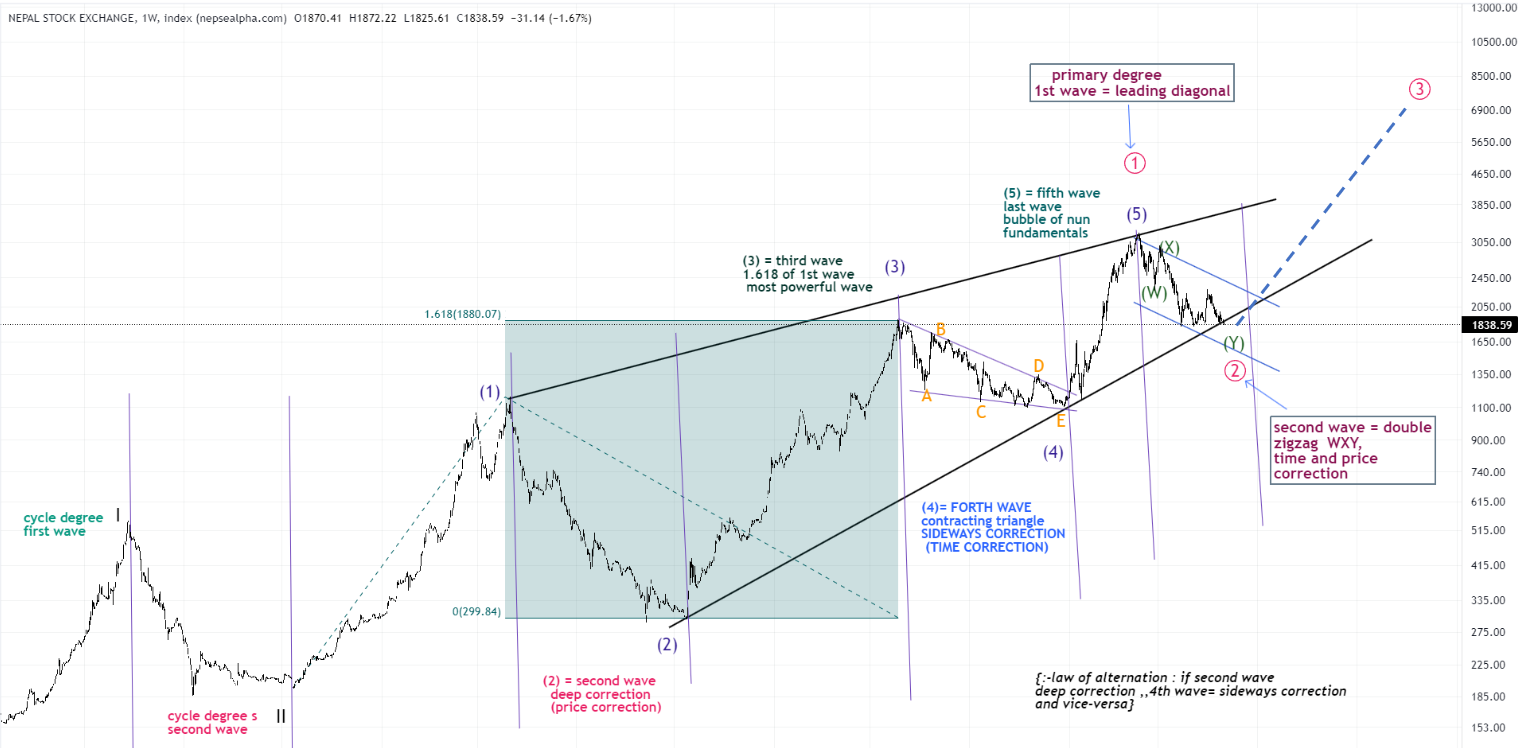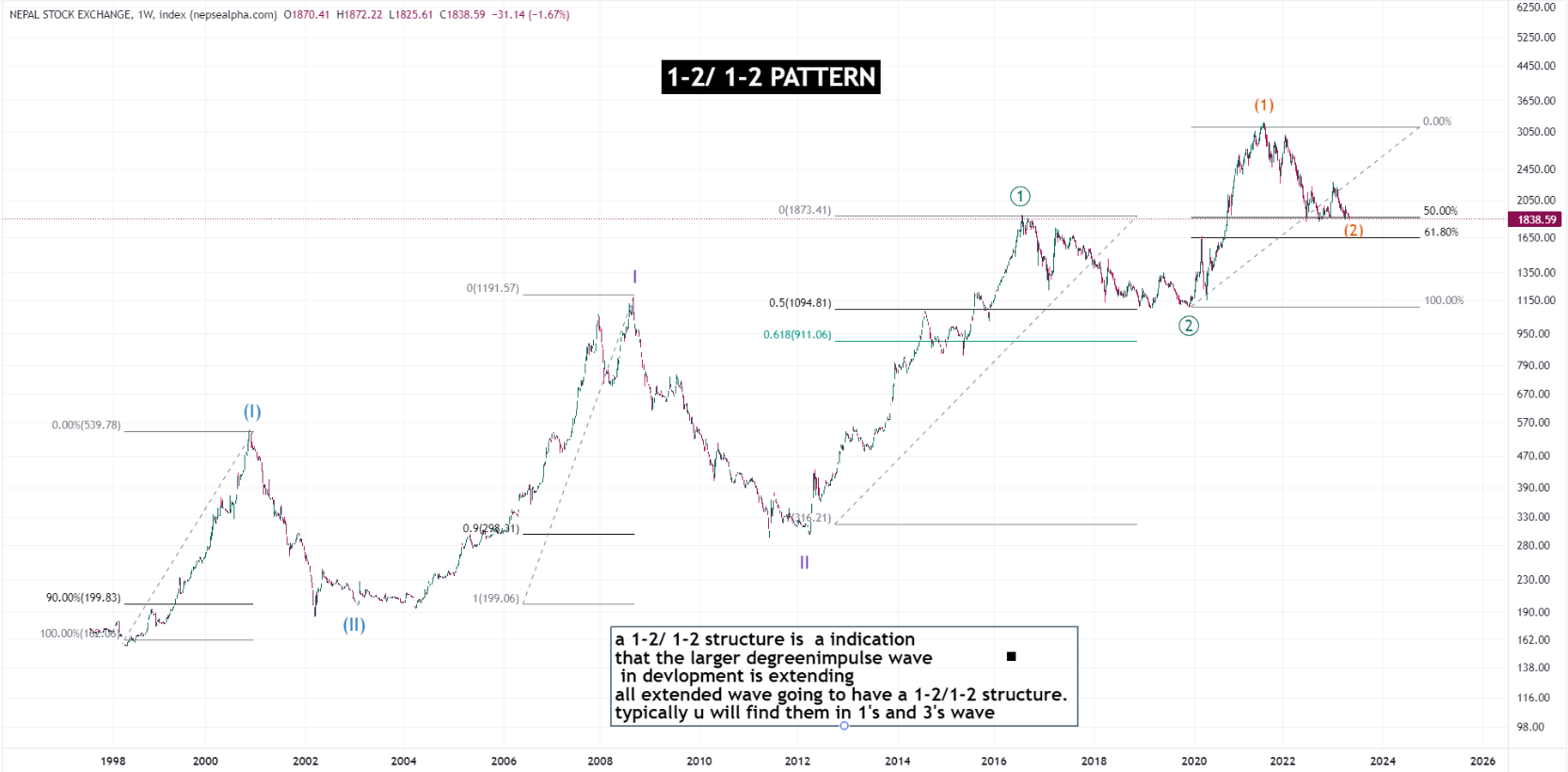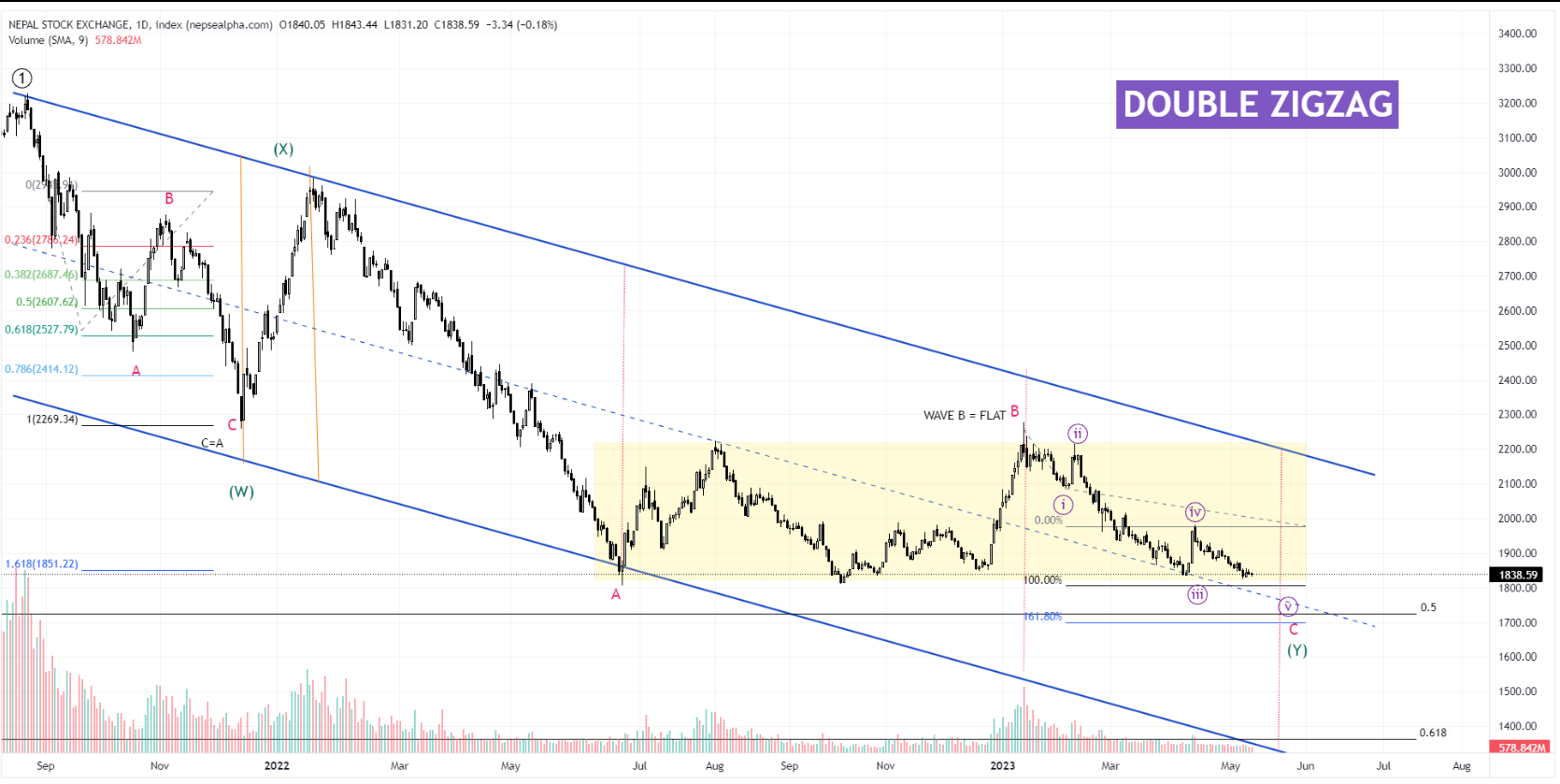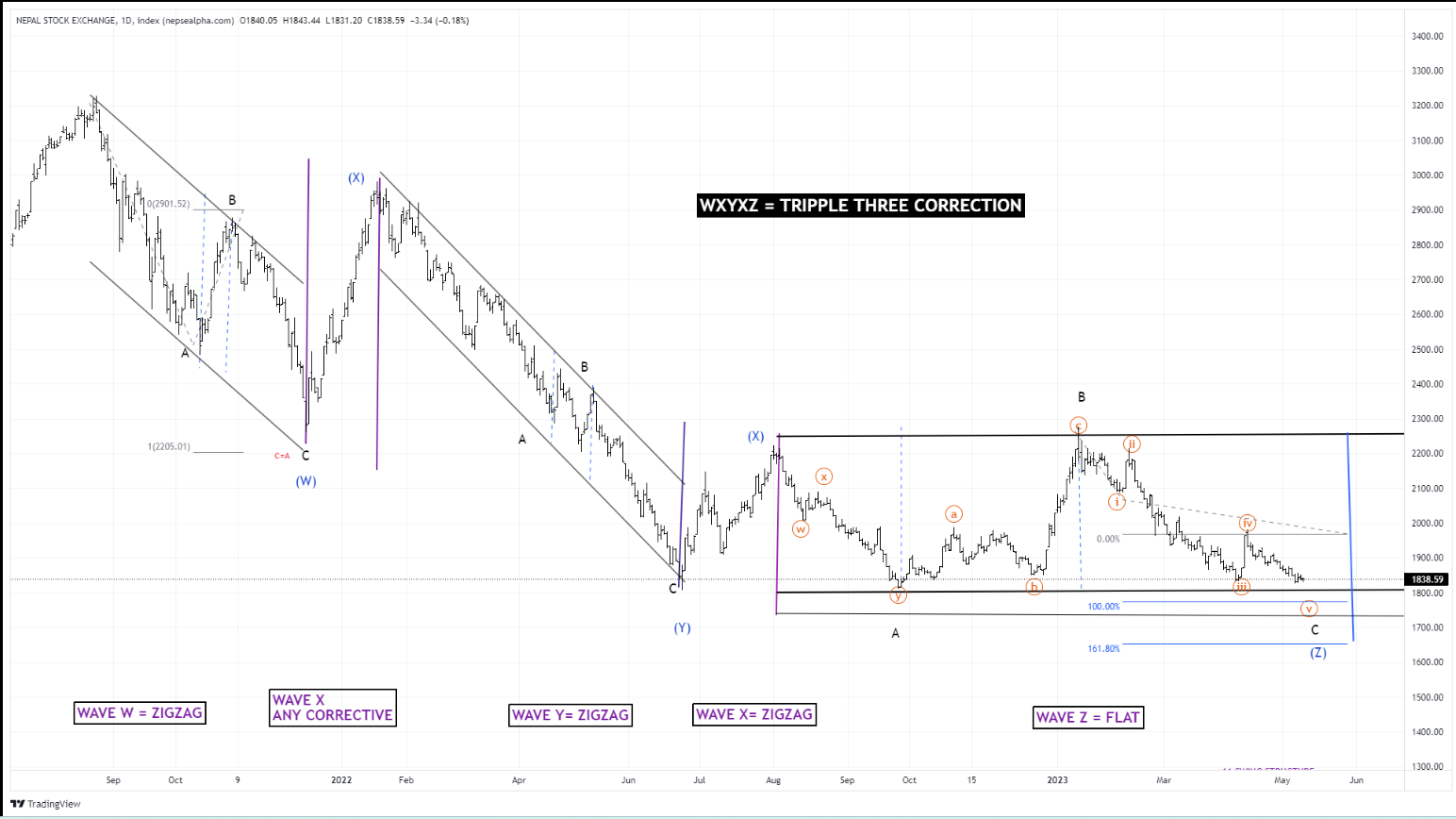Providing an Elliott Wave Analysis of the NEPSE Index and the Present Discount Zone
The NEPSE Index's wedge-shaped pattern has attracted the attention of Elliott Wave practitioners due to its compelling trend. This article offers an unbiased analysis from an Elliott Wave perspective to provide clarity on the NEPSE Index's current discount zone and its potential for the future. According to the Elliott Wave viewpoint, the wedge-shaped pattern of the NEPSE Index suggests that it is presently undergoing a corrective phase and may experience a bullish outlook in the near future.
- Long-Term Perspective
Identifying the Leading Diagonal Pattern:
When examining the NEPSE Index's entire history, we notice a distinctive wedge-shaped pattern where waves one and four overlap. By adhering to the principles and guidelines of Elliott Wave theory, we confirm the existence of a leading diagonal. This leading diagonal represents the initial wave of significant magnitude and concludes its formation at the 3200 index level.
Regarding the Current Correction:
The ongoing decline from the 3200 index level is recognized as the second wave of significant magnitude. It is unfolding as a WXY double zigzag correction. We are approaching the completion of this correction, particularly after the final downward movement referred to as wave c of the second zigzag wave "y." Typically, the second wave retraces between 50% and 61.8% of the first wave.
The Alternative 1-2/1-2 Wave Pattern:
An alternative wave structure known as the 1-2/1-2 pattern suggests the development of an extended impulse wave of higher degree. It is important to note that extended waves often exhibit a 1-2/1-2 structure and may not display alternation. Care must be taken to avoid confusing the second wave (2nd) with wave 4, as this can lead to misunderstandings.
2. Short-Term View:
Two Scenarios
A. Double Zig-Zag:
B. Triple Zig-Zag
The double zigzag pattern is a unique and extensive corrective pattern. Its structure is self-explanatory, as it combines two zigzags into one, with a "three" segment. When a single zigzag is unable to sufficiently correct in terms of price or time, another zigzag is formed. This pattern consists of three segments, with the first and third segments being zigzag patterns, while the second segment is known as an X wave. By considering this perspective, it becomes evident that we are approaching the completion of the final movements, specifically wave c of the second zigzag or wave y.
If Triple Zig-Zag Correction
Similar to the double zigzag, the triple zigzag is another extensive corrective pattern that occurs when a double zigzag fails to fully correct the price or time. The triple zigzag correction is denoted as WXYXZ and exhibits a deeper correction. Unlike the 11 swing structure of a double zigzag, the triple zigzag consists of a more complex series of swings.
By adhering to the rules and guidelines of Elliott Wave theory, we can accurately count the triple zigzag correction during the ongoing decline of the NEPSE Index. However, the precise count can only be determined once the entire structure is completed. Nonetheless, one common aspect between both counts is that we are currently in the 2nd wave and approaching its conclusion. This suggests that it might be a suitable time to prepare for the forthcoming bullish journey of the 3rd wave.
In summary, while Elliott Wave theory offers valuable insights, it is important to consider that market dynamics and future trends of the NEPSE Index are influenced by multiple factors. This article highlights the potential for a significant bullish movement and identifies a discount zone. However, it is crucial for investors to exercise caution, conduct thorough research, and seek advice from financial experts before making any investment decisions. By adopting an Elliott Wave perspective and closely monitoring market movements, investors can effectively leverage the potential of the NEPSE Index and make informed decisions regarding both long-term and short-term investment strategies.







Post a Comment